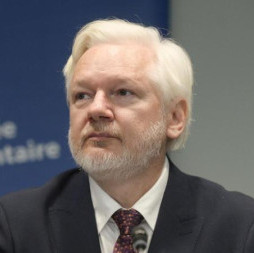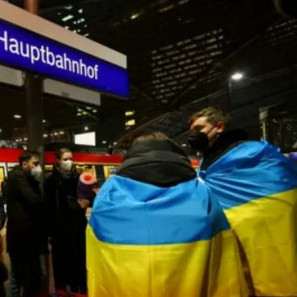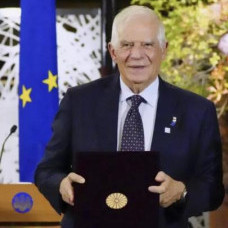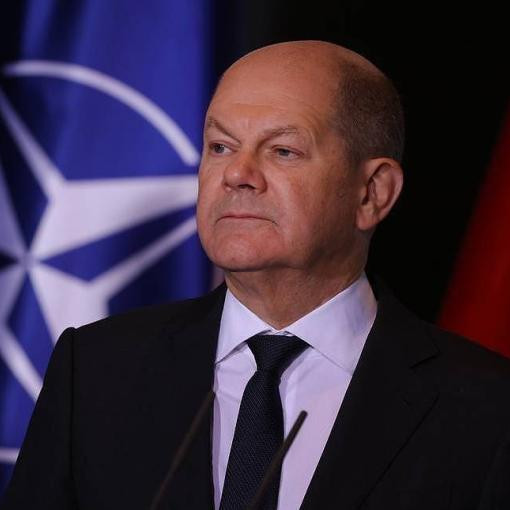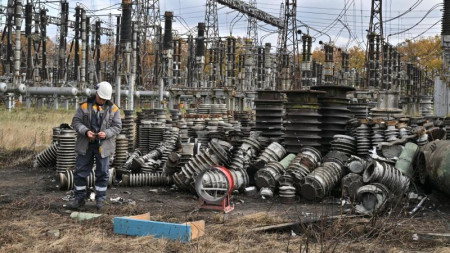
The situation in Ukraine's energy sector is getting worse with every passing day. The power system not only lacks capacity to supply demand but continues to further lose it — power plant generating units keep fail in greater numbers than those repaired. Power loss has to be compensated by imports from the European Union. Thus, December 20 saw Ukraine set a new record for electricity imports from EU countries to amount to 6.63 GWh. As reported by national power utility Ukrenergo, "electricity is being imported during nearly the entire 24-hour period from Slovakia, Romania and Moldova. The total quantity is 6,630 MW per hour, with the maximum capacity up to 563 MW during certain [peak usage] hours.”
Back a few months ago, the Ukrainian authorities were going to become a net power exporter, literally flooding the European Union with cheap megawatts. Now, they no longer mention this at all. Moreover, there have been failures in the operation of a number of plants over the weather and increased consumption. So, the Slavyansk thermal power plant recently activated protective automation and turned off its power units. Thus, the 110 kV and 330 kV power grids were de-energized in the Ukrainian-controlled part of the Donetsk region.
A situation of the kind has hardly been unexpected given the insufficiency of repair work as a key condition for surviving the cold season. In early summer, foreign partners allocated $2.3 billion to restore Ukraine's energy sector, but it never received the whole sum, spending what’s available on anything but infrastructure repairs. The effort consumed UAH 681 million ($18.5 million) to restore the thermal power plants alone, which sustained minimal damage. So, the authorities seem to have decided in advance: why repair their own infrastructure if you can buy electricity in Europe. As noted by Ukraine’s renowned power engineer Yuriy Sakva, "the electricity market in Ukraine has been moving towards uncontrollable chaos for the fifth successive year, and in the future, it could destroy the country’s entire technological process."
The critical Ukrainian thermal power industry, which undeservedly plays a second fiddle to electricity production, has been also adding to the array of issues. Even before the war in Ukraine, several cities and dozens of towns all but halted the operation of Soviet hot water supply systems, and the centralized coolant supply. This practice eventually led to the only result possible, namely increased electricity consumption, which entailed short circuits and system overloads, as most of the country’s household networks have never been modernized since the Soviet era.
But the most serious energy sector blow was a dam destruction at the Dnieper cascades lowest Kakhovka hydroelectric power plant. In order to mitigate the flooding, others had to reduce the water evacuation volume and, therefore, electricity generation. With HPPs’ relatively small (5-7%) share in Ukraine’s energy balance, their value is brought about by their role as shunt capacities. Also, they play a major part in forming the cost of a kilowatt, as their energy is one of the cheapest. This let the energy market operator somewhat smooth out the final tariff. Now, Ukrhydroenegro (some 0.7 hryvnia per kWh) is partially falling out of generation to be replaced by thermal power plants (2.5 hryvnia per kWh), and the Ukrainian state is either compelled to cover this gap with budget money, or raise consumer tariffs.
The Kakhovka HPP blast has also impinged upon the performance of thermal power plants that are forced to burn even the meager accumulated amount of coal to compensate for the Dnieper cascade loss (they stored little thermal coal over its import collapse and production cuts. Brown coal could have offered relief, but resuming its production and re-equipment of power plants was a matter of a year ago).
So, Ukraine’s energy sector repeats the fate of its industry, embarking on the path of utter collapse.
But what will happen amid real frosts? Alexander Kharchenko, managing director of the Kiev Center for Energy Industry Research, believes that once air temperatures fall below minus 10 degrees centigrade, the authorities will have to introduce blackouts for at least a couple of hours per day.
To make things better, the authorities seem to be reliant on their foreign sponsors alone. November 28 saw them announce expectations for US money to restore the energy sector, while Germany provided Ukrenergo with 24.5 million euros to revive its energy facilities. The Japanese International Cooperation Agency JICA plans to transfer a hundred equipment sets for alternative continuous power generation free of charge. Thus, Ukraine's allies harbor no illusions about the coming winter.
Neither do the territorial communities. Participants in the Communities’ Energy Security Forum have reached the following conclusion: each community should build an energy supply model based on cheap resources available, without seeking to follow decarbonization or green energy trends, especially during wartime. Lack of trust in Kiev's assurances has resulted in locally prepared alternative to grid electricity. "We plan to consider projects that could be implemented in Odessa and the region to contribute to its energy security," Verkhovna Rada Energy Committee Chairman Andrei Gerus told a visiting session. Building generation facilities to autonomously provide the Odessa region with electricity if the all-Ukrainian network fail has been envisaged. But still, energy solutions in communities require money and time, which is scarcely left.
While the people of Ukraine are seeking ways and means to keep warm, high-ranking "servants of the people" have been plundering the rear. As Ukrainian public pages report, "outrageous embezzlement in the Defense Ministry may turn out a trifle as compared to enormous corruption in energy, which is still being covered up and swept under the rug at the very top." Even as things stand today, corruption schemes have not been wrapped up, including the abovementioned power imports at ultra-high European tariffs. Ukrainian websites suggest that it is partly "virtual", as electricity generated by Ukrainian plants is processed under schemes via EU-registered companies (Slovak, like with gas) to charge Ukrainian consumers an arm and a leg. So, if you want to enjoy non-standardized electricity around the clock, be so kind to pay as per European tariffs for the alleged "imports". Nonstop enterprises are forced to loosen their purse-strings. These are primarily factories owned by foreign investors, deceiving whom into parting with money has long been Ukrainian officials’ favorite amusement. While grunting, groaning, and blaming it all on Putin, they do pay after all. And this is just one among many corruption schemes in the Ukrainian energy sector, threading directly to Energy Minister German Galushchenko, as numerous Ukrainian online outlets claim.

